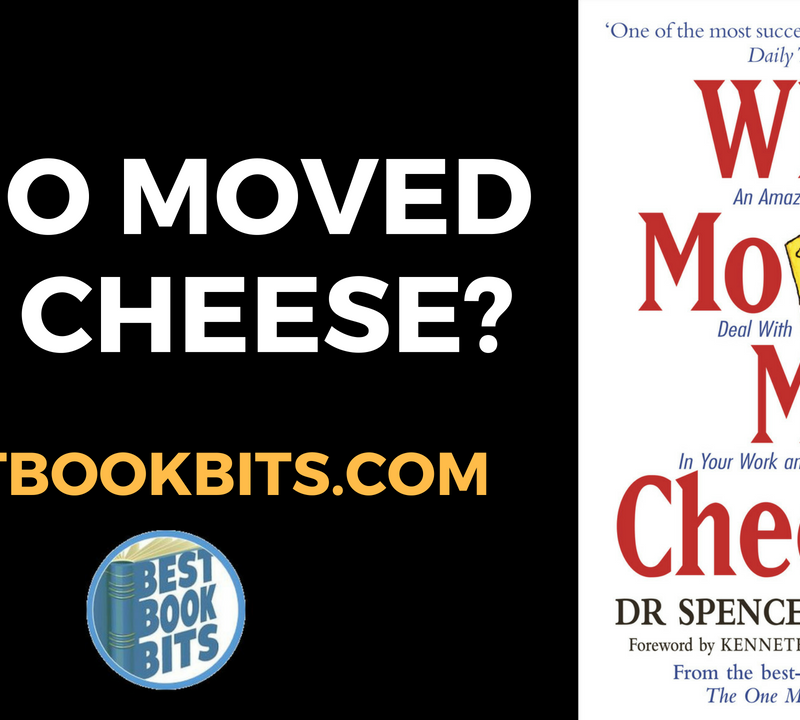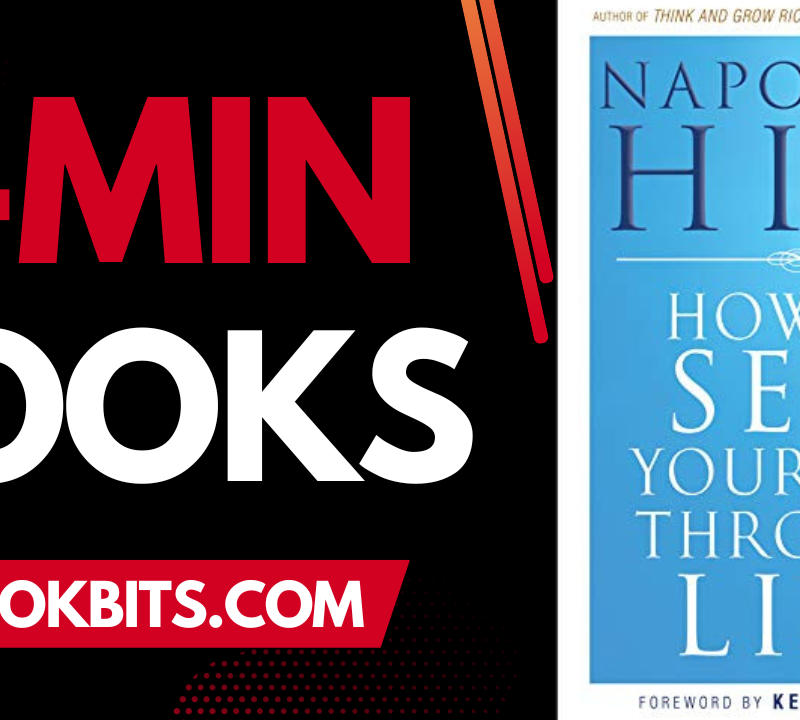★DOWNLOAD THIS FREE PDF SUMMARY HERE https://go.bestbookbits.com/freepdf
? MY FREE BOOK TO LIVING YOUR DREAM LIFE” https://go.bestbookbits.com/first-seven-steps
? SPONSOR BESTBOOKBITS BY USING PATREON https://www.patreon.com/bestbookbits
? SUPPORT BESTBOOKBITS BY CLICKING THE LINKS BELOW
-
- 150 PDF Summaries: https://go.bestbookbits.com/150
- Coaching Program: https://go.bestbookbits.com/coaching
- Subscribe to My Channel: https://www.youtube.com/bestbookbits?sub_confirmation=1
- Website: https://bestbookbits.com
- Instagram: https://www.instagram.com/bestbookbits
- Spotify: https://open.spotify.com/show/0q8OW3dNrLISzyRSEovTBy
- Facebook: https://www.facebook.com/michaelbestbookbits
- Book Club: https://bestbookbits.com/bookclub/
- Mailing List: https://mailchi.mp/d1dfc1907cdb/bestbookbits
Cognitive Biases
- Our decisions are made based on limited, often unreliable, information, and further hampered by internal limits (the brain’s processing power) and external limits (the time constraints under which we have to make our decision).
- So we have developed a subconscious strategy, a problem-solving aid for just such situations: we rely upon heuristics.
- Heuristics are cognitive shortcuts: time-saving, energy-saving rules of thumb that allow us to simplify the decision-making process.
If It Bleeds, It Leads
- These days, we are saturated with information. We have millions of news outlets competing for our mind share. And how do they compete? By vying for the amygdala’s attention.
- The old newspaper saw “If it bleeds, it leads” works because the first stop that all incoming information encounters is an organ already primed to look for danger. We’re feeding a fiend.
- Pick up the Washington Post and compare the number of positive to negative stories. If your experiment goes anything like mine, you’ll find that over 90 percent of the articles are pessimistic.
- Quite simply, good news doesn’t catch our attention.
- Bad news sells because the amygdala is always looking for something to fear.
“It’s No Wonder We’re Exhausted”
- “From the very beginning of time until the year 2003,” says Google Executive Chairman Eric Schmidt, “humankind created five exabytes of digital information.
- An exabyte is one billion gigabytes—or a 1 with eighteen zeroes after it.
- Right now, in the year 2010, the human race is generating five exabytes of information every two days.
- By the year 2013, the number will be five exabytes produced every ten minutes … It’s no wonder we’re exhausted.”
Dunbar’s Number
- People tend to self-organize in groups of 150.
- This explains why the US military, through a long period of trial and error, concluded that 150 is the optimal size for a functional fighting unit.
Saved Time and Saved Lives
- Today [light] will cost less than a half a second of your working time if you are on the average wage: half a second of work for an hour of light!
- Had you been using a kerosene lamp in the 1880s, you would have had to work for 15 minutes to get the same amount of light.
- A tallow candle in the 1800s: over six hours’ work.
- And to get that much light from a sesame-oil lamp in Babylon in 1750 BC would have cost you more than fifty hours work.
Cumulative Progress
- When people say we have an information-based economy, what they really mean is that what we have figured out is how to exchange information.
- Information is our latest, our brightest, commodity.
- “In a world of material goods and material exchange, trade is a zero-sum game,” says inventor Dean Kamen. “I’ve got a hunk of gold and you have a watch. If we trade, then I have a watch and you have a hunk of gold. But if you have an idea and I have an idea, and we exchange them, then we both have two ideas. It’s nonzero.”
A Curve on a Piece of Paper
- let’s examine the Osborne Executive Portable, a leading edge computer released in 1982. This bad boy weighed in at about twenty-eight pounds and cost a little over $2,500.
- Now compare this to the first iPhone, released in 2007, which weighed 1/100th as much, at 1/10th of the cost, while sporting 150 times the processing speed and more than 100,000 times the memory.
Google on the Brain
- Using Moore’s law, the average $1,000 laptop should be computing at the rate of the human brain in fewer than fifteen years.
- Fast-forward another twenty-three years, and the average $1,000 laptop is performing 100 million billion billion calculations (1026) per second—which would be equivalent to all the brains of the entire human race.
- Larry Page describes the future of search in similar terms: “It [Google] will be included in people’s brains. When you think about something you don’t know much about, you will automatically get the information.”
Networks and Sensors
- The planet has grown a central nervous system.
- This nervous system is the backbone of the Internet of things.
- Now imagine its future: trillions of devices—thermometers, cars, light switches, whatever—all connected through a gargantuan network of sensors, each with its own IP addresses, each accessible through the Internet.
- Suddenly Google can help you find your car keys. Stolen property becomes a thing of the past. When your house is running out of toilet paper or cleaning products or espresso beans, it can automatically reorder supplies.
- If prosperity is really saved time, then the Internet of things is a big pot of gold.
- As powerful as it will be, the impact the Internet of things will have on our personal lives is dwarfed by its business potential.
- Soon, companies will be able to perfectly match product demand to raw materials orders, streamlining supply chains and minimizing waste to an extraordinary degree.
- Efficiency goes through the roof.
- With critical appliances activated only when needed (lights that flick on as someone approaches a building), the energy-saving potential alone would be world changing. And world saving.
Artificial Intelligence
- Who cares if the nearest hydrogen filling station is twenty-five miles away, if your car can refuel itself while you sleep?
Robotics
- “In 1950 the global world product was roughly four trillion dollars,” he says. “In 2008, fifty-eight years later, it was sixty-one trillion dollars. Where did this fifteenfold increase come from? It came from increased productivity in our factories equipped with automation.
Medicine
- Now your cell-phone-sized device can not only analyze blood and sputum but also have a conversation with you about your symptoms, offering a far more accurate diagnosis than was ever before possible and potentially making up for our coming shortage of doctors and nurses.
Nanomaterials and Nanotechnology
- Nanobots, as they are called, can start with whatever materials are on hand—soil, water, air, and so on—pull them apart atom by atom, and use those atoms to construct, well, just about anything you desire.
- But almost everything we’re asking nanobots to do has already been mastered by the simplest life-forms. Duplicate itself a billion times? No problem, the bacteria in your gut will do that in just ten hours. Extract carbon and oxygen out of the air and turn it into a sugar? The scum on top of any pond has been at it for a billion years.
- We may lose our ability to properly control it. Drexler himself described a “gray goo” scenario, wherein self-replicating nanobots get free and consume everything in their path.
Gold in Dem Hills
- “Wikipedia took one hundred million hours of volunteer time to create,” says Shirky. “How do we measure this relative to other uses of time? Well, TV watching, which is the largest use of time, takes two hundred billion hours every year—in the US alone. To put this in perspective, we spend a Wikipedia worth of time every weekend in the US watching advertisements alone. If we were to forgo our television addiction for just one year, the world would have over a trillion hours of cognitive surplus to commit to share projects.” Imagine what we could do for the world’s grand challenges with a trillion hours of focused attention.
The World Is My Coffee Shop
- “Until the eighteenth century, it must be remembered, many Westerners drank beer almost continuously, even beginning their day with something called ‘beer soup.’ Now they begin each day with a strong cup of coffee. One way to explain the industrial revolution is as the inevitable consequence of a world where people suddenly preferred being jittery to being drunk.”
- Two thirds of all growth takes place in cities because, by simple fact of population density, our urban spaces are perfect innovation labs. The modern metropolis is jam-packed. People are living atop one another; their ideas are as well. So notions bump into hunches bump into offhanded comments bump into concrete theories bump into absolute madness, and the results pave the way forward. And the more complicated, multilingual, multicultural, wildly diverse the city, the greater its output of new ideas.
- Santa Fe Institute physicist Geoffrey West found that when a city’s population doubles, there is a 15 percent increase in income, wealth, and innovation.
- by 2020, nearly 3 billion people will be added to the Internet’s community.
- That’s 3 billion new minds about to join the global brain. The world is going to gain access to intelligence, wisdom, creativity, insight, and experiences that have, until very recently, been permanently out of reach. The upside of this surge is immeasurable. Never before in history has the global marketplace touched so many consumers and provided access to so many producers. The opportunities for collaborative thinking are also growing exponentially, and since progress is cumulative, the resulting innovations are going to grow exponentially as well. For the first time ever, the rising billion will have the remarkable power to identify, solve, and implement their own abundance solutions.
- ★DOWNLOAD THIS FREE PDF SUMMARY HERE https://go.bestbookbits.com/freepdf? MY FREE BOOK TO LIVING YOUR DREAM LIFE” https://go.bestbookbits.com/first-seven-steps? SPONSOR BESTBOOKBITS BY USING PATREON https://www.patreon.com/bestbookbits
? SUPPORT BESTBOOKBITS BY CLICKING THE LINKS BELOW
-
- 150 PDF Summaries: https://go.bestbookbits.com/150
- Coaching Program: https://go.bestbookbits.com/coaching
- Subscribe to My Channel: https://www.youtube.com/bestbookbits?sub_confirmation=1
- Website: https://bestbookbits.com
- Instagram: https://www.instagram.com/bestbookbits
- Spotify: https://open.spotify.com/show/0q8OW3dNrLISzyRSEovTBy
- Facebook: https://www.facebook.com/michaelbestbookbits
- Book Club: https://bestbookbits.com/bookclub/
- Mailing List: https://mailchi.mp/d1dfc1907cdb/bestbookbits
-
Energy Poverty
- The solar power in the deserts of North Africa is enough to supply forty times the present world electricity demand.
The Holy Grail of Storage
- Aquion Energy, builds a battery similar to today’s lithium-ion designs, but with a serious twist.
- Rather than relying on lithium, a rare and toxic element, its battery uses sodium and water, two cheap and ubiquitous ingredients with the added advantage of being neither lethal nor flammable.
- The result is a battery that releases energy evenly, doesn’t corrode, is based on Earth-abundant elements, and, literally, is safe enough to eat.
The Hole-in-the-Wall
- The small village of Kalikkuppam in southern India. This time Mitra decided to see if a bunch of impoverished Tamil-speaking, twelve-year-olds could learn to use the Internet, which they’d never seen before; to teach themselves biotechnology, a subject they’d never heard of; in English, a language none of them spoke.
- “All I did was tell them that there was some very difficult information on this computer, they probably wouldn’t understand any of it, and I’ll be back to test them on it in a few months.”
- Two months later, he returned and asked the students if they’d understood the material. A young girl raised her hand. “Other than the fact that improper replication of the DNA molecule causes genetic disease,” she said, “we’ve understood nothing.”
- In fact, this was not quite the case. When Mitra tested them, scores averaged around 30 percent. From 0 percent to 30 percent in two months with no formal instruction was a fairly remarkable result, but still not good enough to pass a standard exam.
- So Mitra brought in help.
- He recruited a slightly older girl from the village to serve as a tutor. She didn’t know any biotechnology, but was told to use the “grandmother method”: just stand behind the kids and provide encouragement. “Wow, that’s cool, that’s fantastic, show me something else!”
- Two months later, Mitra came back. This time, when tested, average scores had jumped to 50 percent, which was the same average as high-school kids studying biotech at the best schools in New Delhi.
One Tablet Per Child
- While the computer’s fabled $100 price tag has yet to materialize (it’s roughly $180 today), OLPC has delivered laptops to three million children around the world.
Predictive, Personalized, Preventive, and Participatory
- P4 stands for “predictive, personalized, preventative, and participatory,” and it’s where health care is heading.
- Combine cheap, ultrafast, medical-grade genome sequencing with massive computing power, and we’re en route to the first two categories: predictive and personalized medicine.
Fear, Curiosity, Greed, and Significance
- There are four major motivators that drive innovation.
- The first, and weakest of the bunch, is curiosity: the desire to find out why, to open the black box, to see around the next bend.
The New Spirit of St. Louis
- Competitions such as the X-Prize provide extraordinary leverage.
- Nine teams cumulatively spent $400,000 to try to win Orteig’s $25,000 purse.
- That’s sixteenfold leverage.
The Power of Small Groups (Part 2)
- The American anthropologist Margaret Mead once said, “Never doubt that a small group of thoughtful, committed citizens can change the world. Indeed, it is the only thing that ever has.”
- There are, as it turns out, pretty good reasons for this. Large or even medium-sized groups—corporations, movements, whatever—aren’t built to be nimble; nor are they willing to take large risks. Such organizations are designed to make steady progress and have considerably too much to lose to place the big bets that certain breakthroughs require.
The Power of Constraints
- Dan and Chip Heath, the best-selling authors of Made to Stick: Why Some Ideas Survive and Others Die, point out in the pages of Fast Company, “[D]on’t think outside the box. Go box shopping. Keep trying on one after another until you find the one that catalyzes your thinking. A good box is like a lane marker on the highway. It’s a constraint that liberates.”
Fixed-Price Solutions
- The X PRIZE Foundation. We’ve launched six competitions, awarded four of them, and conceived of another eighty-plus that are awaiting funding.
- Incentive prizes have a three-hundred-year track record of driving progress and accelerating change.
The Upside of Failure
- “Failure is a dreaded concept for most business people. But failure can actually be a huge engine of innovation. The trick lies in approaching it with the right attitude and harnessing it as a blessing, not a curse.”
Getting Comfortable with Failure
- Companies have begun strengthening their fearlessness muscles is rapid prototyping: the process of brainstorming wild new ideas, then quickly developing a physical model or mock-up of the solution.
- “This process,” says Shiv, “allows people to move quickly from the abstract to the concrete, and lets them visualize the outcome of their ideas. Because not all prototypes end up as the best or final solution, rapid prototyping also teaches that failure is actually a necessary part of the process.”
Robotics, AI, and the Unemployment Line
- No one is entirely certain, although it’s helpful to remember that this isn’t the first time automation changed the employment landscape.
- In 1862, 90 percent of our workforce were farmers.
- By the 1930s, the number was 21 percent.
- Today it’s less than 2 percent.
- So what happened to the farm jobs that were displaced by automation? Nothing fancy. The old low-skill jobs were replaced by new higher-skilled jobs, and the workforce was trained to fill them.
- This is the way of progress.
★DOWNLOAD THIS FREE PDF SUMMARY HERE https://go.bestbookbits.com/freepdf
? MY FREE BOOK TO LIVING YOUR DREAM LIFE” https://go.bestbookbits.com/first-seven-steps
? SPONSOR BESTBOOKBITS BY USING PATREON https://www.patreon.com/bestbookbits
? SUPPORT BESTBOOKBITS BY CLICKING THE LINKS BELOW
-
- 150 PDF Summaries: https://go.bestbookbits.com/150
- Coaching Program: https://go.bestbookbits.com/coaching
- Subscribe to My Channel: https://www.youtube.com/bestbookbits?sub_confirmation=1
- Website: https://bestbookbits.com
- Instagram: https://www.instagram.com/bestbookbits
- Spotify: https://open.spotify.com/show/0q8OW3dNrLISzyRSEovTBy
- Facebook: https://www.facebook.com/michaelbestbookbits
- Book Club: https://bestbookbits.com/bookclub/
- Mailing List: https://mailchi.mp/d1dfc1907cdb/bestbookbits













